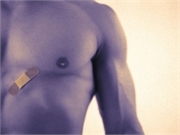Incidence proportion 7.8 percent during March, April 2020 versus 1.5 to 1.8 percent before pandemic
FRIDAY, July 10, 2020 (HealthDay News) — The incidence of Takotsubo cardiomyopathy has increased during the COVID-19 pandemic, according to a study published online July 9 in JAMA Network Open.
Ahmad Jabri, M.D., from Cleveland Clinic Akron General, and colleagues conducted a retrospective cohort study comparing the incidence of stress cardiomyopathy in 258 patients presenting with acute coronary syndrome (ACS) between March 1 and April 30, 2020, during the COVID-19 pandemic and four control groups of ACS patients prior to the pandemic (March to April 2018 [390 patients]; January to February 2019 [309 patients]; March to April 2019 [679 patients]; and January to February 2020 [278 patients]).
During the COVID-19 period, the researchers found a significant increase in the incidence of Takotsubo cardiomyopathy, with a total of 20 cases compared with five to 12 cases in prepandemic timelines (incidence proportion, 7.8 percent versus 1.5 to 1.8 percent). Comparing the COVID-19 pandemic period with a combined prepandemic period, the rate ratio was 4.58. Using reverse transcription polymerase chain reaction, all patients tested negative for COVID-19 infection during the COVID-19 pandemic. Compared with those hospitalized during the prepandemic period, patients with Takotsubo cardiomyopathy during the COVID-19 pandemic had a longer length of hospital stay (median, eight versus four, five, four, and five days, respectively). No significant difference was seen between the groups in mortality or 30-day rehospitalization.
“The COVID-19 pandemic has brought about multiple levels of stress in people’s lives across the country and world,” a coauthor said in a statement. “The stress can have physical effects on our bodies and our hearts, as evidenced by the increasing diagnoses of stress cardiomyopathy we are experiencing.”
Copyright © 2020 HealthDay. All rights reserved.








